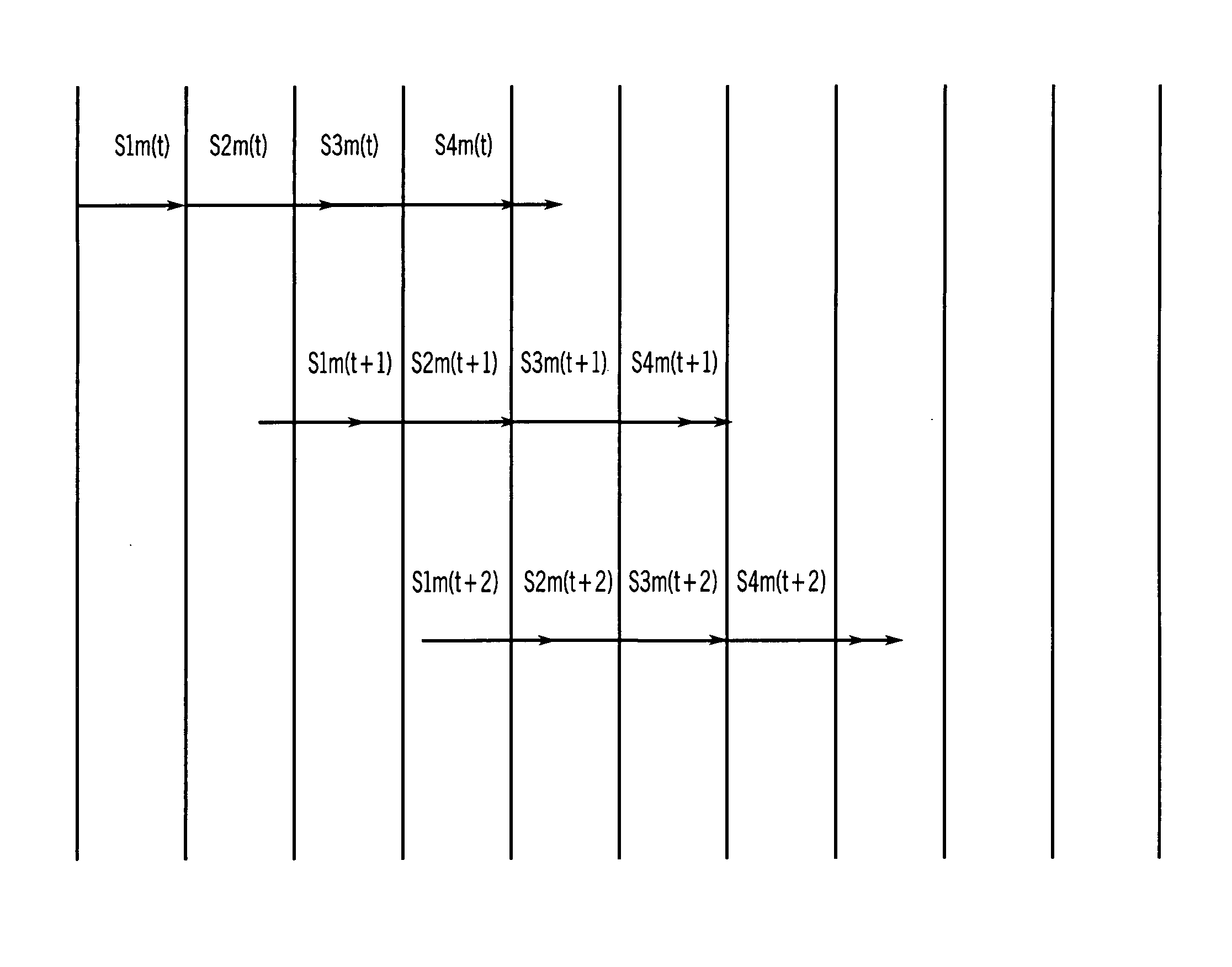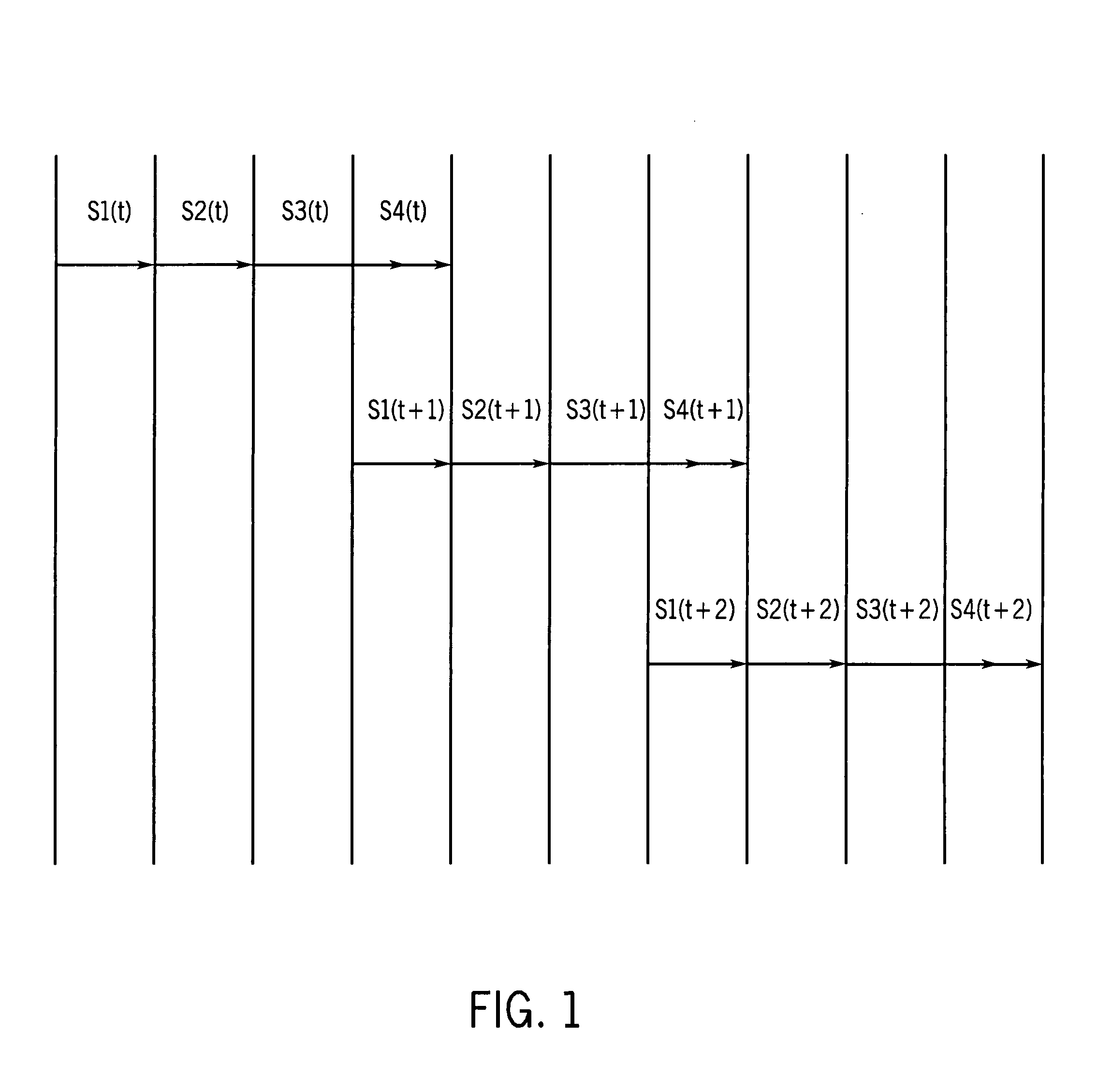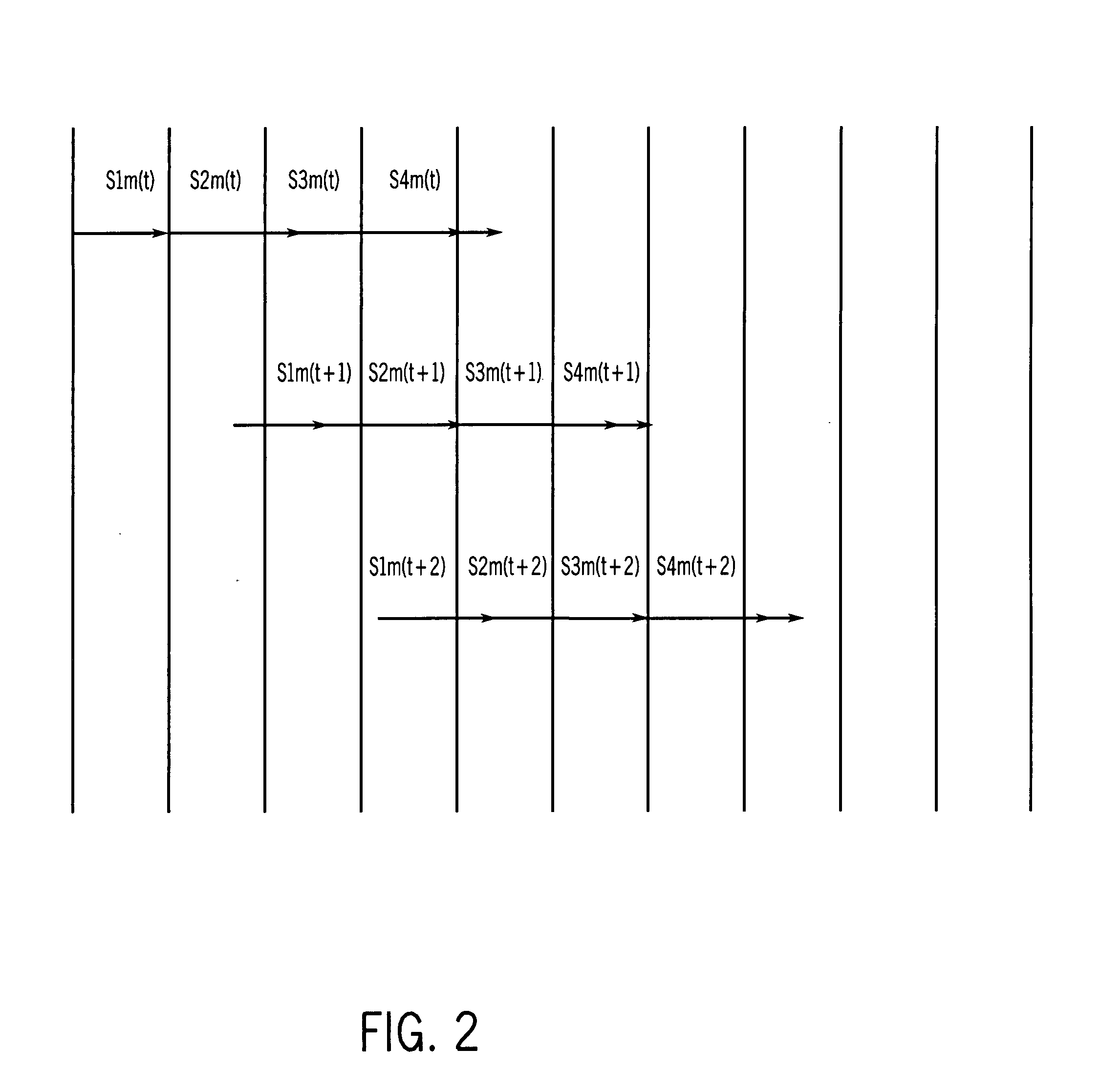Method of calculating internal signals for use in a map algorithm
a map algorithm and internal signal technology, applied in the field of calculating internal signals used in map algorithms, can solve the problems of burdened turbo decoders with the task of performing with very high processing speed, and achieve the effect of improving pipelining
- Summary
- Abstract
- Description
- Claims
- Application Information
AI Technical Summary
Benefits of technology
Problems solved by technology
Method used
Image
Examples
first embodiment
[0062]The embodiments of the invention use modified max-log-MAP algorithms and a first embodiment will now be described.
[0063]In the modified algorithm, the computations for α / β are modified so that pipelining implementation can be faster than that of the prior art. The main feature is to make the computation of α / β of symbol sequence t+1 independent of the normalization of α / β of symbol sequence t.
[0064]Equation (1) is modified so that αt(m) is computed using unnormalized values αt−1(m) instead of normalized values αt−1(m), and a normalized constant At−1 is added.
αt(m)=max-of-2{αt−1(m0)+Υ0t−1(m0), αt−1(m1)+Υ1t−1(m1)}−At−1 (8)
[0065]Equation (2) remains the same.
αt(m)=αt(m)−At (9)
[0066]Similarly, equations (4) and (5) are modified to
βt(m)=max-of-2{βt+1(m0)+Υ0t(m), βt+1(m1)+Υ1t(m)}−Bt−1 (10)
βt(m)=βt(m)−Bt (11)
[0067]The final values of αt and βt are still exactly the same as the prior art.
[0068]Following these modifications, the four dependent sequential stages described in the pri...
second embodiment
[0088]The stages S1m and S3m are still the same, but S2m and S4m are slightly different. For example, for α computation of second embodiment, the four stages are[0089]S1m2(t): Compute Υ0t−1(m0) and Υ1t−1(m1) using Table 1[0090]S2m2(t): Compute αt(m) using equation (16)[0091]S3m2(t): Compute At using one of the equations (3a), (3b), (3c)[0092]S4m2(t): Compute αt(m) using equation (17), and store (A1+A2+ . . . +At) for future use (in the next symbol sequence t+1)
[0093]Compared with the prior art, the length of time taken for these modified stages is almost the same. S1 and S1m2 take exactly the same computation time, and so do the pair S2 and S2m and the pair S3 and S3m. S4m2 is only two times longer than S4 because instead of subtracting one constant, S4m2 subtracts two constants (the second one is the stored value from the previous S4m2 symbol).
[0094]In general, the length of time taken to complete the stages given L number of symbols is
Tm=T1m+T2m+T3m+L×T4m (20)
[0095]By comparing w...
PUM
 Login to View More
Login to View More Abstract
Description
Claims
Application Information
 Login to View More
Login to View More - R&D
- Intellectual Property
- Life Sciences
- Materials
- Tech Scout
- Unparalleled Data Quality
- Higher Quality Content
- 60% Fewer Hallucinations
Browse by: Latest US Patents, China's latest patents, Technical Efficacy Thesaurus, Application Domain, Technology Topic, Popular Technical Reports.
© 2025 PatSnap. All rights reserved.Legal|Privacy policy|Modern Slavery Act Transparency Statement|Sitemap|About US| Contact US: help@patsnap.com



